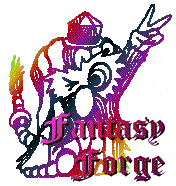 Brush Techniques
Brush Techniques
 Brush Techniques
Brush Techniques
Flat brushing is a specific term for what most of us consider the basic act of painting. The brush is loaded with an appropriate amount of paint and areas are painted with an even coat. The term "flat" refers to the appearance of the surface after painting. Other techniques are then used over the flat painted areas in order to enhance detail and dimensionality.
Dry brushing is a term used to refer to a specific act in painting. As the name implies, the brush should be dry when beginning this task. Often a previously wet brush will be used, and excess water should be purged from such an implement by squeezing between absorbent towels before dry brushing. The paint should also be relatively dry; do not add water to dry brushing paint. Instead, brush it lightly on a palette until the strokes are no longer smooth. The dryness of brush and paint are imperative for this technique to work properly. When the bristles begin to pull away from each other and irregular strokes are noticed, then the brush is loaded properly. By lightly dragging such a brush over highly detailed miniature surfaces, raised filigree is accentuated with the dry brushed color. Recessed surfaces are left unchanged. This is a very effective way to create light and shadow effects.
A Wash is dry brushing's antithesis. Water is added to paint in order to thin it for greater transparency. About half water and half paint is a good starting point for a wash. If greater transparency is desired, then more water can be added. For less transparency, more paint in needed. When applied to a miniature, a washes fulfills two functions. First, a wash will add its color to the color already present on the surface. For example, a yellow wash over green paint will make the green more yellow in color. Second, wash pigments will tend to pool into crevices, placing more paint into the recessed areas of the figure. This can be very useful for some sorts of shading or bringing out some details.
